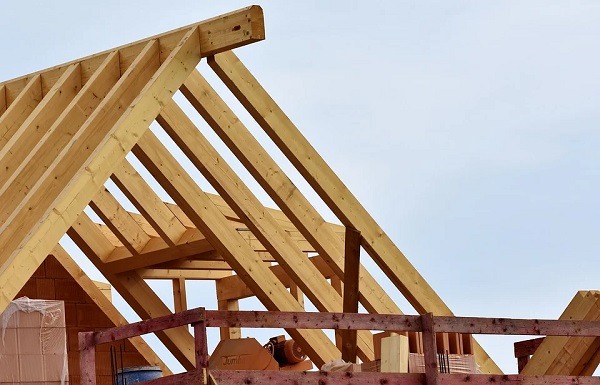Builders and architects are looking beyond traditional building materials in recent years. The new generation building materials are sought out for their strength, light-weight, and sustainability. Lowering costs for construction and less maintenance, easier availability, and eco-friendliness are the primary reasons for new research. We discuss a few modern-day building materials and why they are more efficient. In a broad spectrum of things, we are currently looking at materials better suitable for protection from natural disasters, the inefficiency of traditional building materials, environmental implications of using natural resources, and the related industry struggles to keep up with the rising demands. Some of these might need further refining, while others could prove to have broader applicabilities. If you are still curious, see more here for innovative building materials you could use.
1. Mass Timber
Wood has the most common construction material since olden times. But due to its low strength and vulnerability to fire, materials like concrete and steel replaced it for the construction of buildings. However, engineered wood in the form of mass timber has recently evolved as a promising construction alternative. Mass timber is significantly lightweight and displays superior fire resilience. In addition, its environment friendliness helps eliminate the carbon footprints of concrete and steel. Cross-laminated and glue-laminated timber are the most popular types of mass timber being used in the building industry. Thick and compressed wood provide excellent load-bearing results for the mass timber variants.
2. Pollution Absorbing Bricks
Rising levels of pollution are putting human lives in danger. Commercial buildings are increasingly showing signs of poor indoor air quality (IAQ) measurements, putting workers’ health inside at risk. Pollution absorbing bricks have been invented in an attempt to address these issues. Such bricks have an inbuilt filtration system for external air entering into buildings. Funneled outside air enters the concrete bricks where pollutants and other foreign particles are separated before being pulled inside. This type of brick doesn’t need any active energy, meaning they don’t contribute to further pollution. But lower load-bearing capacity and high space utilisations are the downsides of this brick type.
3. Self Healing Concrete
Maintaining structural integrity could be a problem for concrete constructions. Cracks and imperfections reduce the overall strength by causing corrosion of reinforcements. Self-healing concrete material has the ability to autogenously repair such cracks. This means excellent concrete conditions without the need for human interventions, saving a lot of time and effort. Live bacteria are filled into this type of concrete, along with forms of starch food for their support. When cracks appear, air circulation activates the dormant bacteria, which start to feed and grow within. Calcite excreted by these bacteria over a period of time bonds with the concrete to seal any formed cracks. Due to higher manufacturing costs, self-healing concrete is mostly viable for construction projects that require to last long.
4. Passive Cooling Ceramics
Energy consumption for artificial air cooling systems is significantly high. Moreover, these contribute to high carbon emissions too. On the other hand, passive cooling has been in use since early times. But due to global warming conditions, passive mediums are ineffective during extremely hot summers. Passive cooling ceramics are based on the concept of heat regulation in the human body through sweat. These ceramics are clay composites blended with embedded hydrogels. When the heat within a building builds up, water gets collected in the hydrogel droplets before it gets expelled by evaporation. Such ceramic materials can efficiently cool buildings by controlling this process.
5. Aluminum Foam
Metallic foams have high strength and improved conductivity like the parent metal but with a much lesser weight. Aluminum foam is great as a heat exchanger in buildings. Their porous structure enhances the distribution of heat into the air at a fast pace. The large surface area to volume ratio of aluminum foam makes them exceptional sound dampeners. This property is useful for soundproofing in buildings. Depending upon the structure and shape of cavities, aluminum foam can either be Stochastic or regular foams. Aluminum foam sandwich (AFS) panels are widely preferred for construction due to better stiffness, lower mass, and high energy absorbing characteristics.
6. Trash
In their search for eco-friendly construction materials, architects and builders have increasingly taken to recycled trash. Right from recycled denim to plastic bottles, experiments continue to make them into suitable materials for construction. Consumer recycled denim and carpet fibers have been successfully used as insulators for building walls. Waste glass has been industrially recycled and treated with concrete to create heat-resistant granite-like material for buildings. Used tire wastes have been treated to make lightweight interlocking tiles. The PET (polyethylene terephthalate) from plastic bottle recycling is a soft fiber for carpets which can later be used as insulation stuffings.

